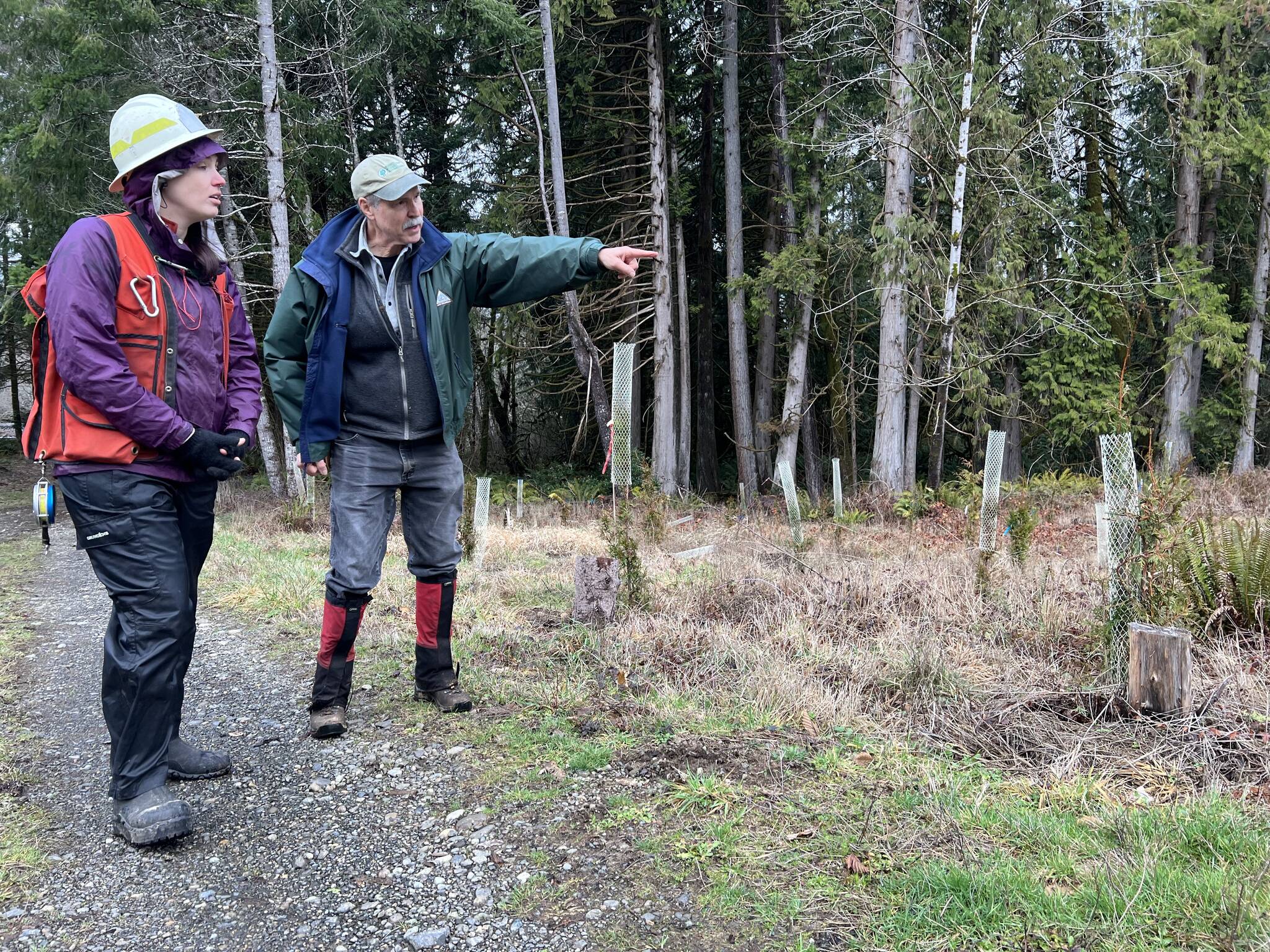Many different species of trees comprise Merc Boyer’s family forest south of Elma: Sitka spruce, alder, big leaf maple, Western white pine, cedar and Douglas fir. He even has California redwood and American chestnut trees.
The forest is diverse, and in turn, healthier and stronger. It didn’t get that way by accident, but rather was a product of Boyer’s meticulous manipulation and a firsthand knowledge developed over decades of managing the area.
Many of the trees were precisely planted by Boyer or someone in his family.
It’s the kind of forest that Emily Fales, a service forester with the Department of Natural Resources, can admire.
But not all small forest landowners have the necessary insight — or energy — to maintain such an exemplary forest. Many aren’t aware of exactly what’s growing on their land, or why it matters. That’s part of the reason why the DNR hired Fales in September —to help less-knowledgeable landowners realize the potential of their forests.
“A lot of people will just assume all of their trees are healthy, they don’t know what species they are, a lot of things like that,” Fales said. “But come some kind of drought or some kind of stressor, they find their trees are not appropriate for their area. We’re trying to get the word out to those people who really need our help.”
Fales works mostly in the DNR’s cost share program, advising landowners on potential projects they could carry out to boost forest health. Fales said that could look like, for example, the removal of Scotch broom — an invasive shrub that blooms yellow when the weather warms — from a field and planting trees in its place.
In other places, some landowners buy a stand of trees not knowing the forest is actually an old Christmas tree farm — likely composed of a single, less-than-ideal species in the eyes of a forester.
Other forests could be battling certain diseases, such as root rot, which can weaken trees and kill them before they reach full height.
But each property is different, Fales said, and starts with a site visit to determine how forest health could be improved.
“Landowners’ objectives will determine the end result of a project based on their interests and what they want to do on their own lands, and then there’s the technical assistance side, which is my translation of what forest health is here in Western Washington,” Fales said.
Fales’ services come at no charge. Then, once Fales helps landowners decide on a project, the program will match 50% of whatever is due to the project’s contractor.
Or, if a landowner would rather roll up their sleeves, the DNR will supply a wage of $30 per hour for the landowner to complete the project themselves.
The service forestry program is part of a larger effort by the DNR to increase outreach to small forest landowners. According to Natalie Johnson, a communications manager with the DNR, the agency’s Service Forest Program was previously only available in Eastern Washington. About six months ago, DNR expanded the program to the west side of the state, creating 21 new service forester positions, 18 of which have been filled so far.
Any landowner who harvests less than two million board feet of timber per year on average is eligible to recieve assistance from the DNR’s Small Forest Landowner office.
Funding comes from Washington state House Bill 1168, which went into effect in July 2021. The bill provides $125 million every two years for improving long-term forest health and the reduction of wildfire dangers. According to the bill, Washington state has nearly eight million acres of private forest land, and about 3 million of those acres are held by small forest landowners, according to the DNR.
“A lot of forests are managed industrially at larger scales, so working with small landowners is an opportunity to do more restoration on these lands, increase diversity and forest health, and combat invasive species,” Fales said
Small private forest lands “provide critical raw materials for the forest industry, rural economic opportunities, fish and wildlife habitat, cultural resources, and recreation,” the bill reads.
But due to increased parcelization, the bill states, the amount of forestland held by small private owners is declining, while the number of landowners is increasing. From 2007-2019, the state lost 110,000 acres of land owned by small forest landowners.
Part of Fales’ job, she said, is to engage landowners with their own property to ensure the land remains healthy, prosperous and forestland.
That’s why the DNR developed a new online tool called the Landowner Assistance Portal, which helps landowners connect with service foresters and learn about forest health programs.
“The idea was to organize information for small forest landowners by topic in one location,” Johnson said.
The portal provides links to information about forest health, as well as to a number of other DNR forest programs. In addition, landowners can search their property with a tool called “find your forester” which connects them to the service forester in their area.
“My favorite thing is meeting landowners where they’re at, and translating my technical knowledge into a language and terms that more general people can understand,” Fales said.
Contact Reporter Clayton Franke at 406-552-3917 or clayton.franke@thedailyworld.com.


